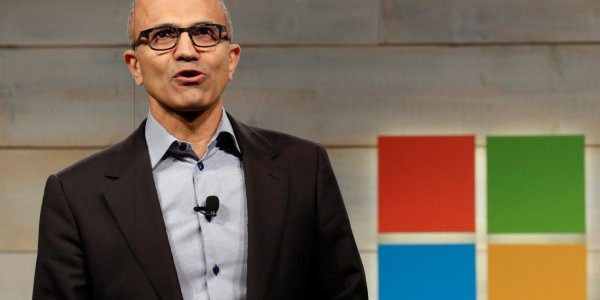It’s always good to step outside ourselves and understand what others are experiencing. While we focus on overcoming the adversity of vision loss, our colleagues, friends, and neighbors are busy meeting their own challenges.
Recently, Microsoft CEO, Satay Nadella, shared the very personal experience that inspires his commitment to making accessibility and inclusive design a priority. He notes that this year’s National Disability Employment Awareness Month’s theme was dubbed, “Inclusion Drives Innovation,” a concept Microsoft totally supports.
The flip side is equally true…innovation drives inclusion. Either way, we’ll take more of it, please! The scope of work and it’s sense of inclusion is conveyed in the Microsoft Accessibility Blog’s subtext, “Making technology easier to see, hear, and use!”
Here is an excerpt from Satay’s blog post:
“Becoming a father of a son with special needs was the turning point in my life that has shaped who I am today. It has helped me better understand the journey of people with disabilities. It has shaped my personal passion for and philosophy of connecting new ideas to empathy for others. And it is why I am deeply committed to pushing the bounds on what love and compassion combined with human ingenuity and passion to have impact can accomplish with my colleagues at Microsoft.
“It is fitting that the theme of this year’s U.S. National Disability Employment Awareness Month — recognized every October — is “Inclusion Drives Innovation.” We could not agree more. At Microsoft, we are making accessibility a top priority in our product development efforts, from core features in Windows 10 like Narrator to pushing the boundaries of what’s possible through innovations like Hearing AI created by Azure engineer Swetha Machanavajhala. In addition, we know that having an employee base that is representative of all backgrounds and abilities is one of our greatest strengths. This is why we continue to be passionate about hiring people with disabilities through initiatives like the Autism Hiring Program and Supported Employment Program, which help us advance our mission to empower every person on the planet — including more than 1 billion people who have disabilities. I am an optimist who firmly believes that at its most powerful, technology can contribute to incredible human capability and insight. I also believe it can help people find immense joy and a deeper connection to the world around them by enabling them to realize their professional and personal potentials. Some of my favorite examples of technology in action are where people have come together from across Microsoft, united by a shared passion to hack and build solutions that have the potential to benefit millions.
“Recently, one of my colleagues, Angela Mills, shared her personal story with me. Angela is visually impaired — having lost her central vision when she was a child, today she has only her peripheral vision. Over the years, she has used various technologies to assist her daily activities, but she calls the early release of the new Seeing AI app “life-changing.” Before, when she went into a cafeteria for lunch, she would have to find a cafeteria worker and ask for help in picking out a salad. Now, she can go to the salad area and use the app on her phone to read the labels of the salads before choosing one by herself. She can walk confidently into a conference room, knowing for sure she’s in the right place with the right people; and when she’s cooking at home, she doesn’t have to rely on her husband to read out the labels on the spice jars. It’s incredible to see how this idea that was sparked and developed at our annual hackathon by Saqib Shaikh, Anirudh Koul, and team, is now a free application that enables Angela and many others to feel more included and connected to the world around them, and we can’t wait to bring it to more folks around the world in weeks and months to come.” S
To read the full article on Microsoft’s inclusive design projects for people with Autism, ALS, Learning Issues and Visual Impairments, and to access audio described videos on these subjects…Click Here.







